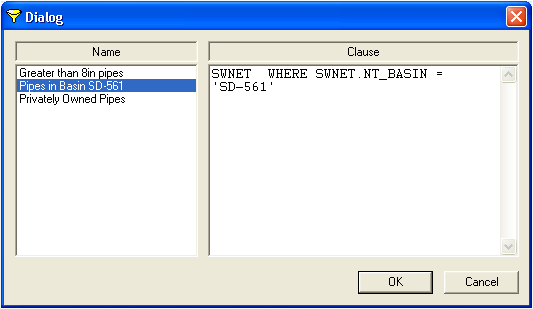
Note: You can use the ![]() button to remove a filter string from the modeling parameters.
button to remove a filter string from the modeling parameters.
This tab allows you to indicate the modeling parameters. You can use the Filter Name fields to indicate which filterset will be analyzed during the model run. The Pipe Analysis fields allow you to indicate which pipes will be included in the model analysis. These sections are described below:
Filters
Filters help you to limit the number of records processed and focus your model on pipes of a certain type, in a particular location, etc. To include a filter, follow the steps below:

Note: You can use the ![]() button to remove a filter string from the modeling parameters.
button to remove a filter string from the modeling parameters.
Pipe Analysis
The Pipe Analysis checkboxes and pick list allow you to indicate which pipes will be included in the model analysis.
Field Name |
Use/Purpose |
Exclude Lined Pipes |
This checkbox allows you to exclude all lined pipes from the model analysis. Pipe lining is identified in the Pipe Inventory module, Attributes tab. |
Analyze TV Records |
This checkbox allows you to include TV Inspection records in the model analysis. |
Analyze Lamping Records |
This checkbox allows you to include Lamping records in the model analysis. |
Analysis Type |
This field allows you to set three separate modeling runs using Structural Only analysis, O&M Only analysis, or Structural and O&M analysis. The default Analysis Type is 3 - Structural and O&M. Note: The model analysis will look at the Structural and O&M observation data from the TV Inspections or PACP Inspections modules. When an inspection record is entered, the system will determine if it is the most recent inspection for the pipe and designate it as such. Only the most recent inspection data (whether from TV Inspections or PACP Inspections) is used. |